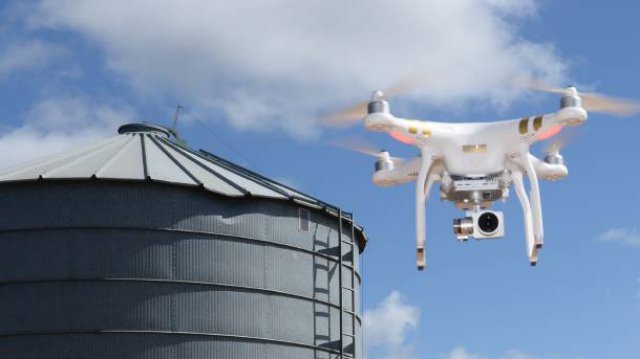CSIRO and agribusiness, Ruralco, have teamed up in a partnership which will promote greater use of digital technology, including drones and long-range sensing in agriculture.
A series of projects will roll out in coming months to develop data-driven solutions for more efficient and sustainable farming.
The partnership draws on CSIRO’s expertise in data science research and engineering, and proven track record of agricultural innovation, and combines with Ruralco’s on-ground farm services branch and advisory network.
The two organisations say the partnership can deliver new digital solutions to farmers Australia-wide particularly through use of unmanned aerial vehicles (UAVs), or drones, in long-range livestock detection to improve muster effectiveness.
Ruralco already sells drones and related data management software as part of a relationship with a US company, PrecisionHawk, initiated last November.
Other key areas for the partnership include nutrient and fertiliser management in areas of high conservation value, such as the Great Barrier Reef, and development of long-range sensing to automate and streamline operations, including water management, livestock safety and farm security.
By adaptation of geospatial tools to provide an interface between Ruralco customers and their advisers, the company and CSIRO expect to use real time data to help advisers and farmers with decision making and planning.

Ruralco rural supplies general manager, Greg O’Neil, with a DJI Matrice 100 drone and PrecisionHawk’s Australian general manager, Nat Hyde.
Ruralco managing director, Travis Dillon, said drone technology was facilitating a data-driven decision making breakthrough in agriculture.
“Farmers can better analyse issues which affect productivity and sustainability such as: effective nutrient delivery; plant growth; and combat biosecurity issues such as invasive species and pest infestation,” he said.
He was delighted to be working with CSIRO to improve farm practices and better manage the environment.
“Ruralco is well positioned to deliver innovative technology through our 600 national outlets,” he said.
This partnership is an example of us teaming up with Australian industry to help capitalise on the next computing cycle, at the intersection of data and domains like agriculture
PrecisionHawk’s drone and data analytics innovation had already led to development of accessible, farmer-friendly smartphone and tablet apps to analyse agricultural data in the US, South America and Europe.
CSIRO’s data innovation group Data61 chief executive officer, Adrian Turner, said his team had deep, globally-recognised capability in robotics, remote sensing and data analytics.
CSIRO’s Data61 is Australia’s largest digital innovation group with capabilities in cyber security, confidential computing,robotics, machine learning and analytics, software and programming, and more.
“This partnership is an example of us teaming up with Australian industry to help capitalise on the next computing cycle, at the intersection of data and domains like agriculture,” he said.
“Our work in cyber physical systems, machine learning and analytics, software and computational systems and decision sciences will all play a role.
“Our technologies are capable of storing and distributing data efficiently and reliably over long distances.
“Importantly, we are helping to make remote sensing accurate, robust, secure and trusted.
“Ruralco will be a strong design and commercialisation partner with its large national footprint and customer base.”
CSIRO’s digital agriculture lead with CSIRO, Dave Henry, was looking forward to working with Ruralco to support agribusiness become more productive, profitable and sustainable into the future.
“It’s early days with the use of drones in agriculture and this partnership with Ruralco will allow us to explore and quantify those situations where the use of drones will aid farmer decision-making in livestock and cropping,” said Dr Henry.
He noted agriculture in Australia was worth more than $50 billion and grew by $3.1 billion in 2015-16, helped considerably by the industry’s willingness to embrace technology advances.
Source: Farm Online

